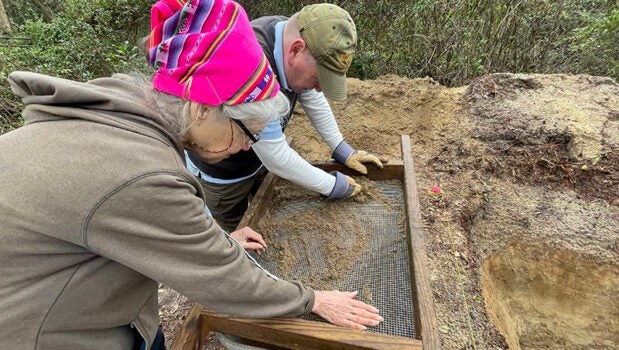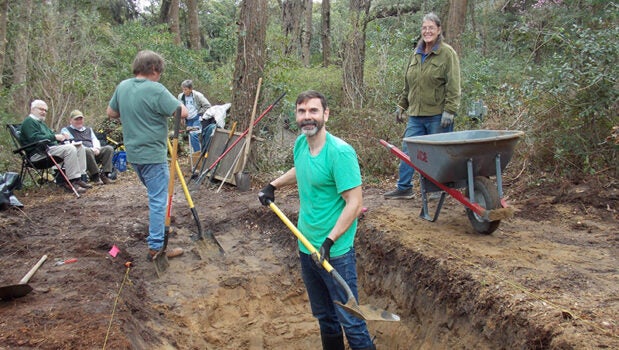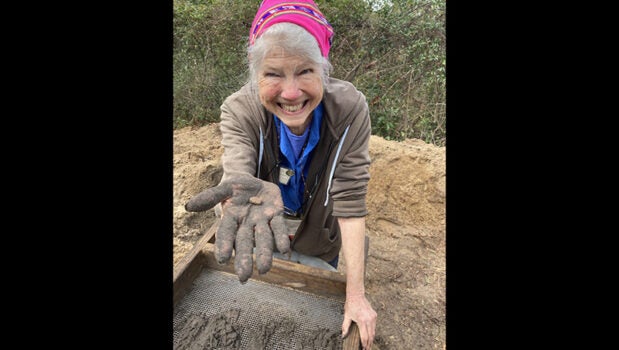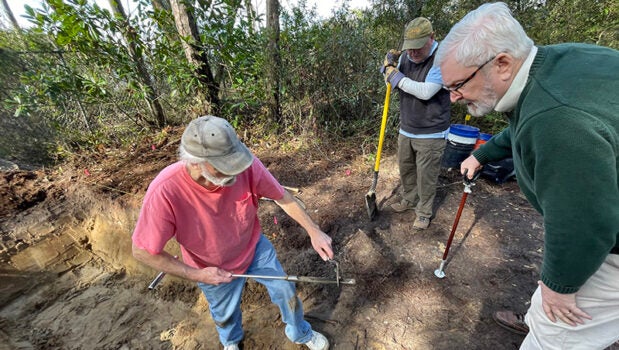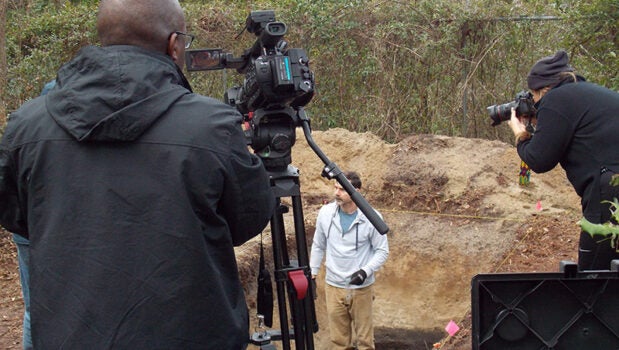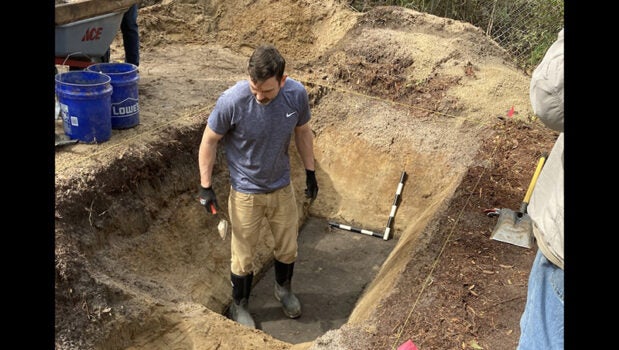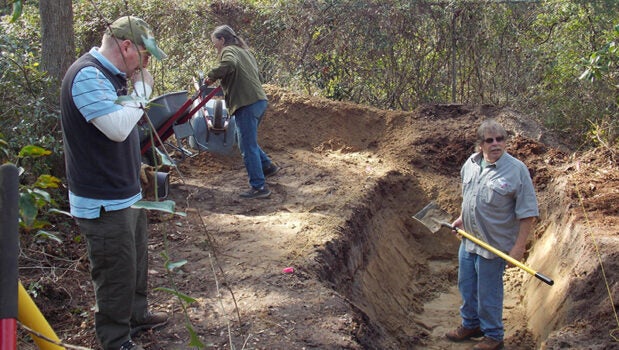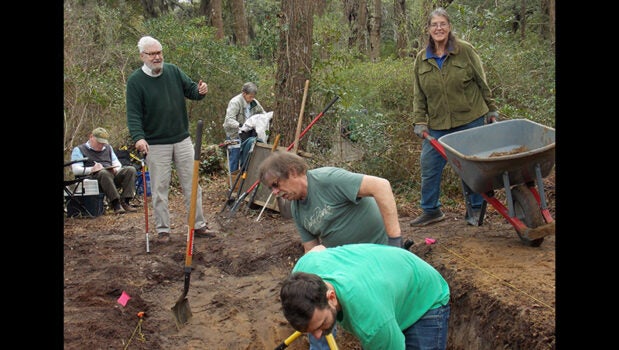First Colony Foundation’s Elizabethan Gardens multi-year dig project completed; new excavations slated at Fort Raleigh in April
Published 9:17 am Wednesday, March 27, 2024
|
Getting your Trinity Audio player ready...
|
By Jack Currie, special to The Coastland Times
Pottery sherds uncovered during First Colony Foundation’s most recent dig at Elizabethan Gardens on Roanoke Island may have been used during the key First Contact between Sir Walter Raleigh’s explorers and local Native Americans in 1584. And, in the present day, they help establish the size and extent of the Algonquian village of Roanoac that hosted that long-ago encounter.
The goal of the dig was to determine the extent of this part of the native village reached as well as uncovering any additional artifacts that could shed light on this historic period. In the course of the excavation, the team found good deal of charcoal and small sherds of Algonquian cooking pots – plus a larger sherd that was more identifiable.
“Pottery fragments like these have a wonderful story to tell,” says Eric Klingelhofer, First Colony Foundation’s vice president for research, who led the dig. “They add to our understanding of the native culture but in a special way – given their connection to the very first moment when a native tribe welcomed Elizabethan settlers into their home. It was the beginning of a story that sadly ended in tragedy – which echoes today.”
Evidence uncovered during the dig – and last year, at nearby excavations on the Elizabethan Gardens site – confirm a theory that the village consisted of a palisaded area (as noted by Elizabethan explorers), where the tribe’s elite resided and surrounding farmsteads, and where a “working class” lived and labored.
Klingelhofer says he envisions farmsteads attached to fields of roughly half an acre, where the Native Americans grew tobacco, corn, beans, pumpkins, and other gourds. “These details form a pattern that enables us to better understand the world in which Raleigh’s colonists arrived,” he says.
Last summer, the First Colony team uncovered tantalizing finds including sherds of Algonquian pottery dating to that time – an interesting find, by itself – but the most intriguing discovery was a ring of drawn copper wire. About the size of a quarter, the loop could have been an earring that once adorned a Native American warrior.
To reach the 16th-century level, this year the team faced a challenge: Shoveling through four feet of sand deposited centuries ago, while carefully beveling the sides of the trench to forestall collapse. This necessary precaution whittled the working size of the unit from about six feet by 10 feet at the surface down to three feet by eight feet at the 16th_century level, which made for tight working conditions.
The team’s plunge into the past revealed a stark contrast in the soil layers over the centuries. From the deep layer of golden sand deposited by the long-ago hurricane to the dark umber of the 16th-century topsoil – which looks like a patch of asphalt, from a distance – it was Roanoke Island’s story written in soil.
Optical Stimulated Luminescence Dating (OSLD) tests conducted at nearby Fort Raleigh over a decade ago determined that the sand dune now covering the area was washed ashore during a massive storm in the 1760s – long after the Elizabethan explorers’ visit. OSLD estimates the last time sediments were exposed to sunlight.
“This strengthens the conclusion that there were no dunes at the north end of the island in the 1500s,” he says.
Assisting Klingelhofer at the Elizabethan Gardens dig were FCF veteran Martha Williams, along with FCF volunteers Rob Bolling, Jeremy and John Bliven, Paul Carson, Tama Creef, Mona and Jack Currie and Jay Ward.
Next month, the First Colony team returns to Fort Raleigh. Using the results remote sensing equipment, they will explore the wooded sand dunes west of the theater for clues to Governor Lane’s 1585 fort and settlement, England’s first colony.
FIND OUT MORE: First Colony Foundation, formed in April 2003, is dedicated to conducting archaeological and historical research, combined with public education and interpretation, relating to the story of America’s beginnings with the attempts by Sir Walter Raleigh to establish English colonies at Roanoke Island in the 1580s under his charter from Queen Elizabeth I. For more information, visit firstcolonyfoundation.org.
SUBSCRIBE TO THE COASTLAND TIMES TODAY!


